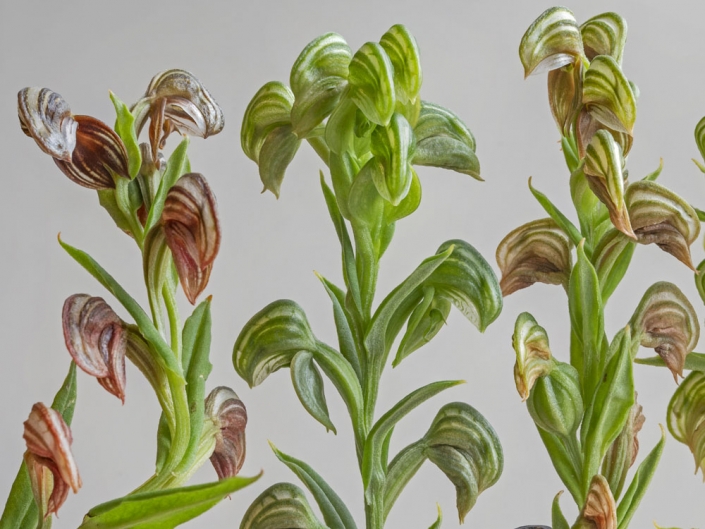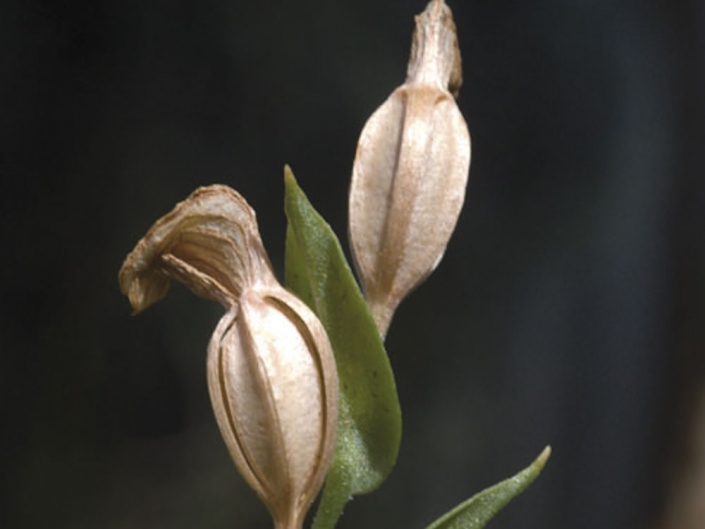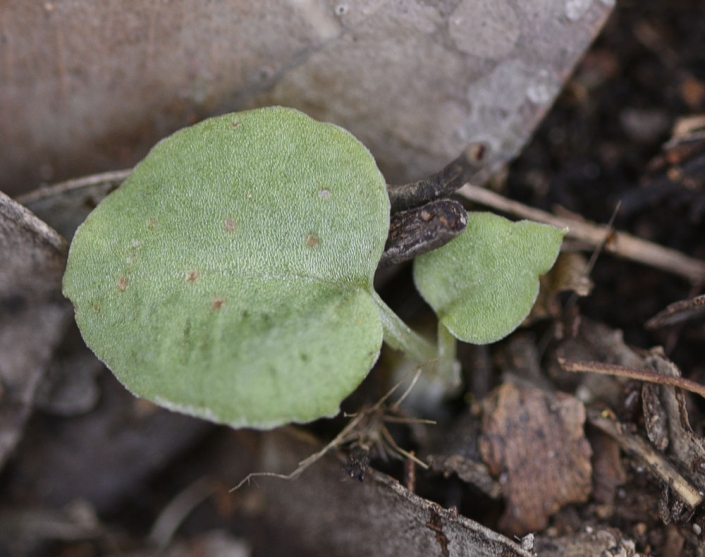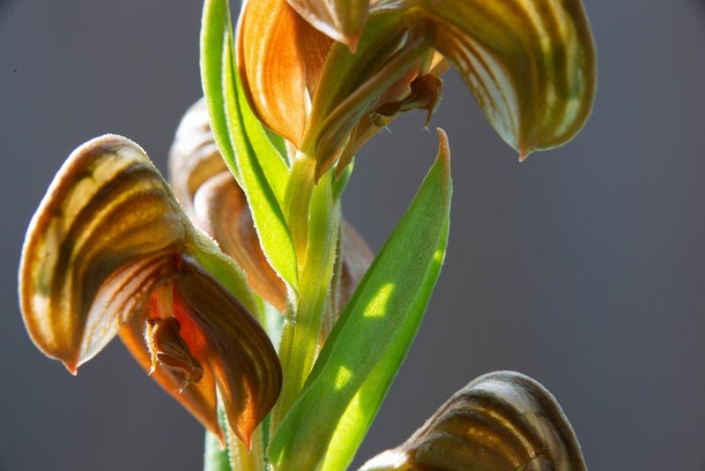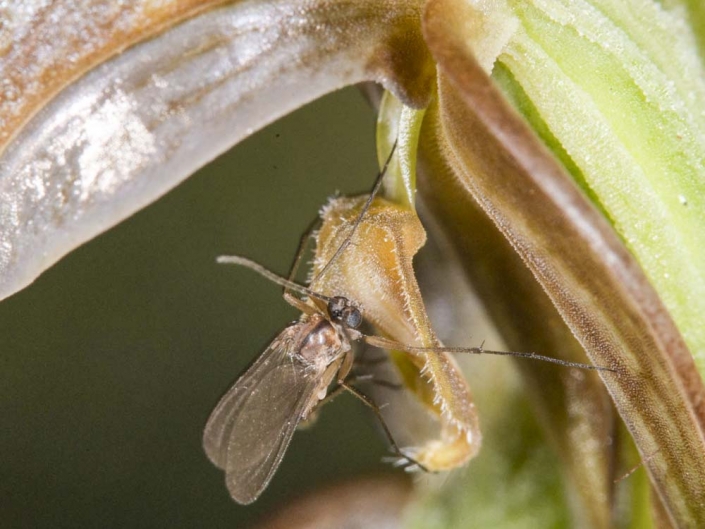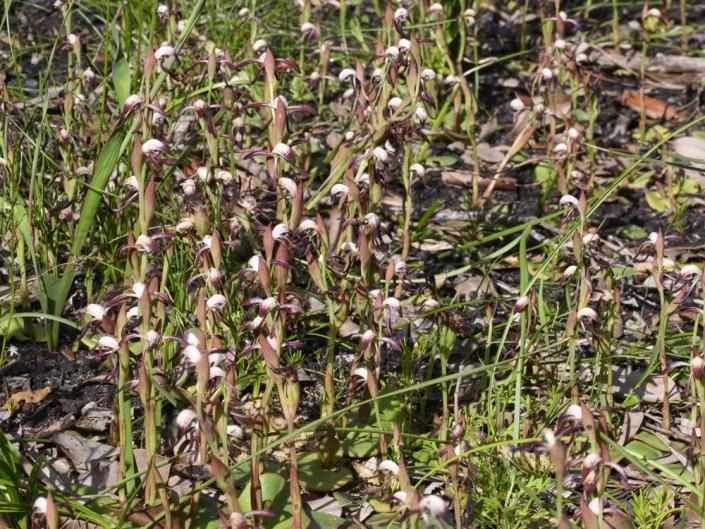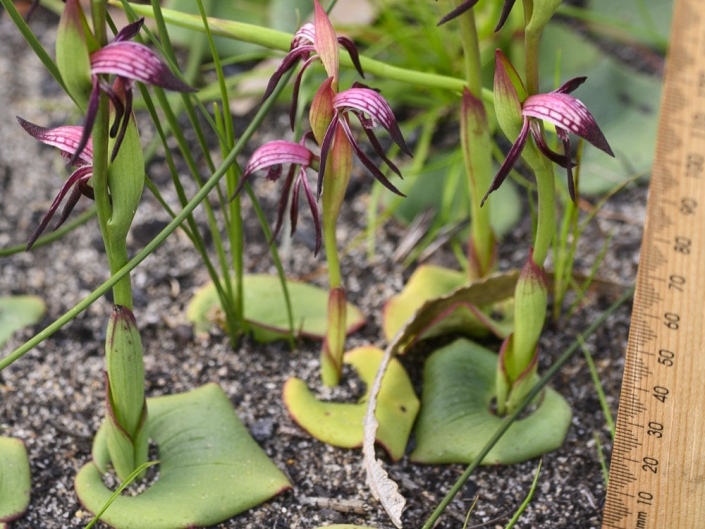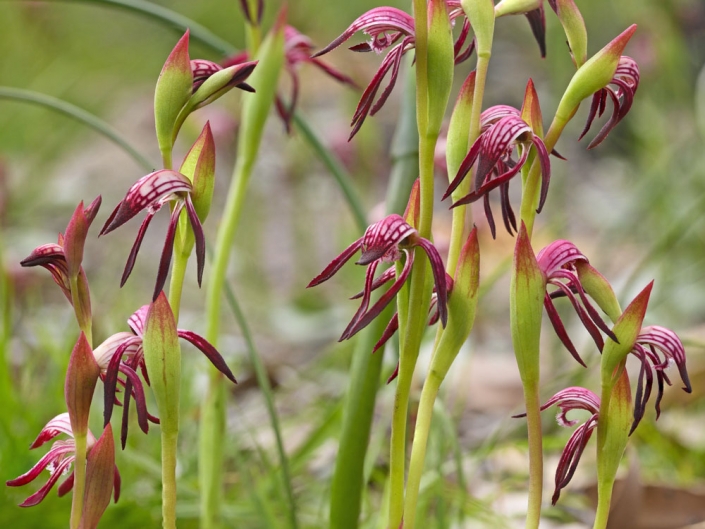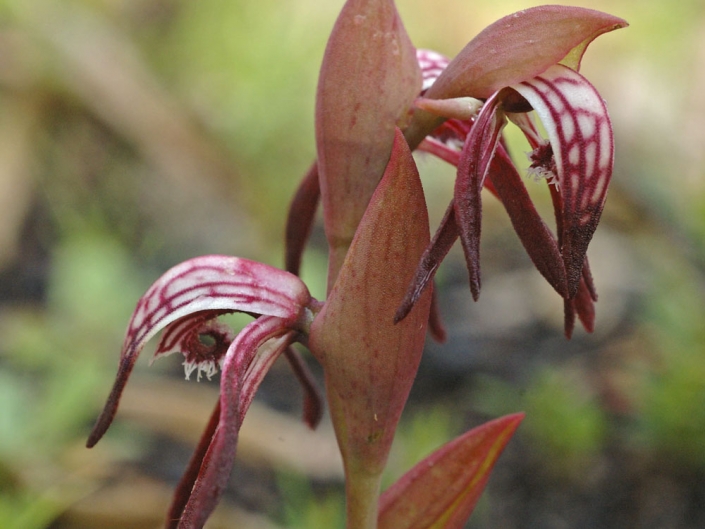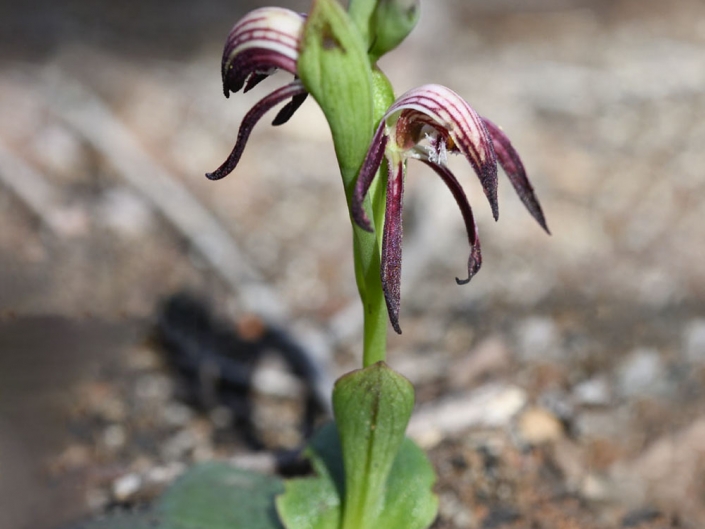Point of Interest 3B. Nature Trail Loop
This is a short, side-trail loop with a firm limestone base. This area has widely-spaced, large jarrah trees over scattered banksias, and many wildflowers in season.
Common Wildflowers
Autumn – Creeping triggerplant (Stylidium repens), Small Semaphore Sedge (Mesomelaena pseudostygia), Large Sedge (Schoenus grandiflorus), Matted Triggerplant (Stylidium repens)
Winter – Prickly Moses (Acacia pulchella), Running Postman (Kennedia prostrata)
Spring – Cottonheads (Conostylis aculeata), Milkmaids, Common Dampiera (Dampiera linearis)
Late Spring & Early Summer – Tall Fringe Lily (Thysanotus sparteus), Pixie Mops (Petrophile linearis), Yellow Buttercups (Hibbertia hypericoides), Pineapple Bush (Dasypogon bromeliifolius), Creeping Triggerplant Scaevola repens var. repens, Summer Scented Wattle (Acacia rostellifera)
Focus Topic 7. Greenhood Orchids are Canaries in a Coal Mine
Flowers of the Banded Greenhood (Pterostylis orbicularis) are translucent with darker stripes and have a floral chamber formed of fused tepals above a plate formed by two partly fused sepals. Flowering begins in late autumn and continues through winter and there are three or more local colour forms with red, green or brown stripes. This orchid is very common and widespread in the local area, and reproduces by seed and clonally by forming multiple tubers in winter. Tubers sprout in early autumn, but the shoot remains below the soil surface until late autumn when it emerges and leaves form rapidly in early winter, followed by flowering, seed formation and seed dispersal.
Orchids in Warwick Bushland are used for a long-term monitoring project investigating impacts of climate and fire on their reproduction and survival. Five years of data revealed that between 20% and 50% of flowers produce seeds depending on climatic conditions (MC Brundrett unpublished data). However, these orchids prefer shady areas where leaf litter accumulates and are less productive in recently burnt areas. They can be killed by late autumn fires when their growing tip is emerging.
Banded Greenhood Orchid pollination is by tiny midge-like insects called fungus gnats (Mycomya sp.) that are strongly attracted to flowers (see video below). These insects carry relatively large pollen masses between flowers. Greenhood flowers are insect traps as shown below in the images of open and closed flowers. These flowers flip gnats inside them when they trigger a spring-loaded lip. They must escape by crawling past the pollen and later the stigma of a second flower where pollen is deposited.
Focus Topic 8. Red Beak Orchids are Fire Responders
The Red Beak Orchid produces large, fleshy, heart-shaped leaves that grow flat along the ground and are commonly called Elephant Ears. This orchid flowers in late winter after a hot summer bushfire, when it can produce a profusion of red and white beak-like flowers. Their need for fire to flower is reflected in the genus name Pyrorchis, which is derived from the ancient Greek word “pyr” meaning fire and “orchis” meaning orchid. In the past 25 years only two plants flowered in unburnt areas out of the millions of plants growing here.
Red beaks are one of the most abundant orchids both in Warwick Bushland and in Western Australia. Each leaf is a separate plant belonging to the same clone. There are thousands of leaves in large colonies, which can be up to 10 m wide after decades or centuries of gradual vegetative reproduction. Like all orchids, Red Beaks depend on symbiotic fungi that are required for germination of their tiny seeds and the nutrition of adult plants (see video below).
How Orchids depend on Fungi
Dr Daniela Scaccabarozzi interviews Prof Mark Brundrett on orchid interactions with fungi. Filmed by Andrea Aromatisi.






